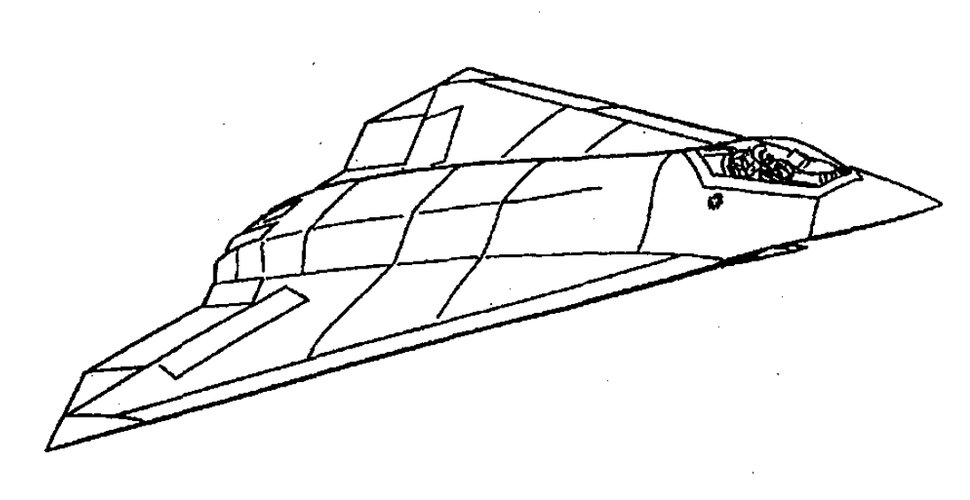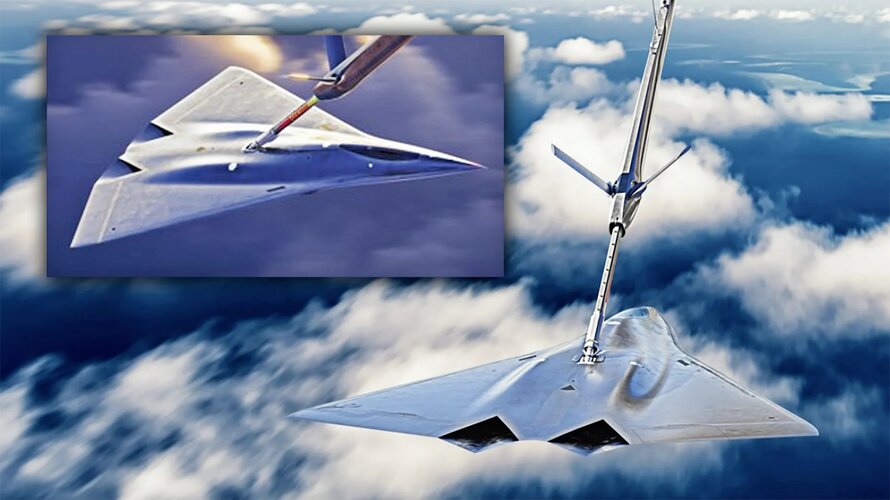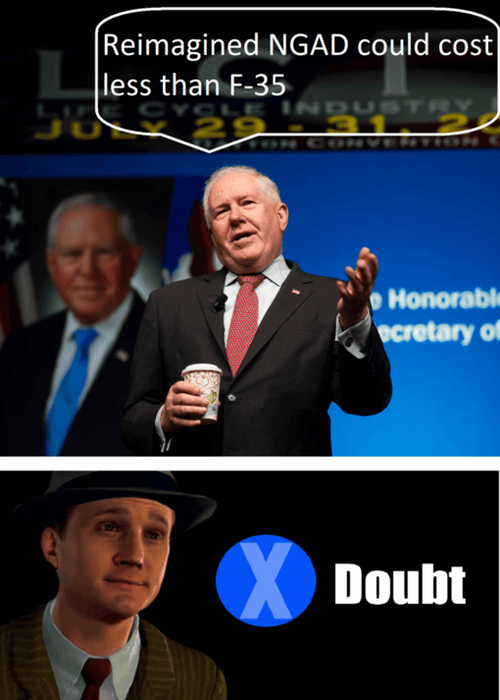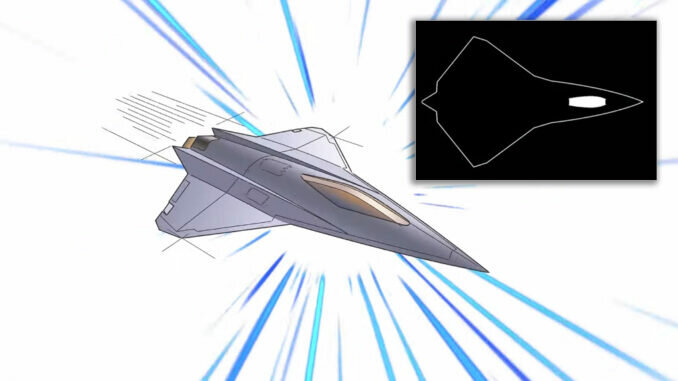You are using an out of date browser. It may not display this or other websites correctly.
You should upgrade or use an alternative browser.
You should upgrade or use an alternative browser.
USAF/US NAVY 6G Fighter Programs - F/A-XX, F-X, NGAD, PCA, ASFS news
- Thread starter Matej
- Start date
- Joined
- 4 July 2010
- Messages
- 2,356
- Reaction score
- 2,576
Absolutely Not. Hardest of Passes.Interesting
Kendall Wants to Stay as Air Force Secretary Under New President
Air Force Secretary Frank Kendall said he wants to keep serving after the 2024 presidental election to work on his modernization efforts.www.airandspaceforces.com
Interesting
Kendall Wants to Stay as Air Force Secretary Under New President
Air Force Secretary Frank Kendall said he wants to keep serving after the 2024 presidental election to work on his modernization efforts.www.airandspaceforces.com
There is a good quote at the bottom of that report:
“So what should Increment 2 be? Do not assume and it may not be just an evolution of Increment 1. It could be an entirely different set of missions. Could be [an] entirely different kind of an aircraft,” Andrew Hunter, Assistant Secretary of the Air Force for Acquisition, Technology & Logistics, said at the 2024 Defense News Conference earlier this month. “And so part of that initial work is, again, starting with a large vendor pool, what are the good ideas out there? We’ll have some ideas [about] what we think Increment 2 needs to do as part of a broader force, and that’s part of this broader look at air dominance and how we’re going to deliver that.”
The Air Force is still voicing a clear commitment to the broader NGAS and NGAD initiatives no matter how they might evolve going forward. Questions about how aerial refueling support will be provided in high-end conflicts are also now clearly emerging as a central factor in the service’s planning for the future.
“We have a strong sense of urgency here. Our analysis must be adequate to support major decisions and to help us align our requirements, our acquisition strategies, and funding for these three programs,” Kendall said in his keynote, referring to NGAS, the NGAD combat jet, and CCA. “Stand by for answers in the next few months.”
Seems they are trading the bulky internal fuel tanks of the transcontinental NGAD for something lighter that would refuel on a secured enough manner and have the mass of a large magazine of weapons carried by lighter CCAs. In other words: a disaggregated design that brings similar capacity out of a variety of platforms (not a flying puzzle but an agnostic one that can pair with whatever is there available).
The lighter, less complex components also fit the desire to evolve rapidly, module after module.
Last edited:
Absolutely Not. Hardest of Passes.
Why not?
Good for them for learning from past mistakes.There is a good quote at the bottom of that report:
Seems they are trading the bulky internal tanks of the transcontinental NGAD for something lighter that would refuel on a secure enough manner and have the mass weapons carried by lighter CCAs. In other words: a disaggregated design that brings similar capacity out of a variety of platforms (not a flying puzzle but an agnostic one that can pair with whatever is there available).
The lighter, less complex components also fits the desire to evolve rapidly, module after module.
This is going to be a controversial opinion, but; had the requirements for the JSF been defined better/ they didn't try to fit clashing needs of each service into a single aircraft, a Strike Eagle-esque F-35 with relaxed requirements could've been the NGAD they desperately need right now.
Yes, at the end the jet turned out to be pretty good for what it is, but the program itself is such a shameful waste of taxpayer money...
Scott Kenny
ACCESS: Above Top Secret
- Joined
- 15 May 2023
- Messages
- 8,170
- Reaction score
- 8,563
What's the point of a flying weapons magazine that isn't stealthy?
I strongly disagree with that idea, unless Northrop has the capacity to make some KB21s as stealth tankers.There is a good quote at the bottom of that report:
Seems they are trading the bulky internal fuel tanks of the transcontinental NGAD for something lighter that would refuel on a secured enough manner and have the mass of a large magazine of weapons carried by lighter CCAs. In other words: a disaggregated design that brings similar capacity out of a variety of platforms (not a flying puzzle but an agnostic one that can pair with whatever is there available).
The lighter, less complex components also fit the desire to evolve rapidly, module after module.
Half the point of the long range was to keep the tankers out of the A2AD bubble.
I think more tankers with smaller targets on their backs simply offers (way) more flexibility that can at the same time cover for the disadvantages of a smaller and less complex NGAD.Half the point of the long range was to keep the tankers out of the A2AD bubble.
This is IMHO absolutely the correct approach to take if you're fighting in the Pacific and trying to take on China (that is, unless you're ok with optimizing a variant of the B-21 as the NGAD and prepared get hurt more when you eventually lose them.)
What's the point of a flying weapons magazine that isn't stealthy?
I strongly disagree with that idea, unless Northrop has the capacity to make some KB21s as stealth tankers.
Half the point of the long range was to keep the tankers out of the A2AD bubble.
A lot of what they are doing don't make sense and doesn't give you much confidence. It's like medicine and "the Science" with COVID. At some point you can't trust the expert when their credibility has been put into question by changing narratives, contradictions, and reversals on programs and policies.
Re: CCAs. You would think that they should carry their weapons internally and be at least as observable as their manned collaborators? If they are not then they will not only telegraph that a manned fighter is in the area but will become attritable whether they like it or not. I thought GA's XQ-67 could carry two AMRAAM sized weapons internally. But I might be wrong about that. TBH - that's a light load for $30 million combat aircraft. Is this really affordable mass?
Cost: $30 is a little pricey for something that can only carry two AMRAAMs internally. Yes, I realize that the sustainment cost will be less than a manned fighter. But the AF also only wants to have them in the front line for only 10 years before they are iterated and replaced by more advanced versions. At $30 million, I don't know if that math works out. As I have said previously, For the price of three CCAs you can purchase an F-35 that can carry six AMRAAMs as well as other weapons internally/externally with a full sensor suite that might be more survivable than a CCA. You will get additional range with an adaptive engine.
Re: Range, NGAS, and NGAD. A more efficient, cost effective, and operationally effective solution is design a planform that has long range and requires minimal tanking. What's the minimal range requirement for NGAD? Is it critical for the AF to operate NGAD from extremely long distances unrefueled - Guam, Australia, Wake, etc? If this is the case then the situation with regard to China is dire. The tyranny of distance will impose a huge cost on sortie rate if NGAD cannot operate closer to China.
I am not sure what the trade off are, but an unrefueled combat radius of 1,000 to 1,200 nm would open a number of bases and civilian airfields in Japan and Philippines. Those two island chains would also be much easier for the US to logistically support with fuel and munitions than small islands close to Taiwan.
AAR is still an option, but it will be challenging to support close to Taiwan, even with NGAS. The cost of Boeing's MQ-25 is around $150 million. It is proposing a larger land based tanker. How much more will that cost? Isn't it likely that NGAS will be a Silver Bullet fleet? It is likely that it's capacity will not be as large as a KC-46 so it will likely require AAR itself? And how close will it refuel assets to IADS? The greater range that can be built into NGAD further out from the A2/AD bubble the USAF can safely refuel its fighters.
Scott Kenny
ACCESS: Above Top Secret
- Joined
- 15 May 2023
- Messages
- 8,170
- Reaction score
- 8,563
As you note, it's 1/3 the cost of an F-35, and if you can do some tricks with construction like making the entire skin in one piece you can probably get the cost lower with a decently large production run.Re: CCAs. You would think that they should carry their weapons internally and be at least as observable as their manned collaborators? If they are not then they will not only telegraph that a manned fighter is in the area but will become attritable whether they like it or not. I thought GA's XQ-67 could carry two AMRAAM sized weapons internally. But I might be wrong about that. TBH - that's a light load for $30 million combat aircraft. Is this really affordable mass?
Remember that the CCAs are supposed to be stealthy, which means all the RAM and RAS are baked into the cost.Cost: $30 is a little pricey for something that can only carry two AMRAAMs internally. Yes, I realize that the sustainment cost will be less than a manned fighter. But the AF also only wants to have them in the front line for only 10 years before they are iterated and replaced by more advanced versions. At $30 million, I don't know if that math works out.
So they're going to be relatively expensive because of the stealth requirements.
I honestly assume that any airfield within 1000nmi of China would be hit with ballistic missiles and/or hypersonics.Re: Range, NGAS, and NGAD. A more efficient, cost effective, and operationally effective solution is design a planform that has long range and requires minimal tanking. What's the minimal range requirement for NGAD? Is it critical for the AF to operate NGAD from extremely long distances unrefueled - Guam, Australia, Wake, etc? If this is the case then the situation with regard to China is dire. The tyranny of distance will impose a huge cost on sortie rate if NGAD cannot operate closer to China.
I am not sure what the trade off are, but an unrefueled combat radius of 1,000 to 1,200 nm would open a number of bases and civilian airfields in Japan and Philippines. Those two island chains would also be much easier for the US to logistically support with fuel and munitions than small islands close to Taiwan.
Which means flying from Guam, PNG, Wake, Oz, etc.
Given that the bigger MQ25 is only longer wings for 40% more fuel, I'm not expecting it to be more than about $175mil, and hopefully less due to economies of scale. 40% more fuel puts it to a fuel load of about 22,000lbs to transfer, roughly 1/4 that of a KC46.AAR is still an option, but it will be challenging to support close to Taiwan, even with NGAS. The cost of Boeing's MQ-25 is around $150 million. It is proposing a larger land based tanker. How much more will that cost? Isn't it likely that NGAS will be a Silver Bullet fleet? It is likely that it's capacity will not be as large as a KC-46 so it will likely require AAR itself? And how close will it refuel assets to IADS? The greater range that can be built into NGAD further out from the A2/AD bubble the USAF can safely refuel its fighters.
- Joined
- 4 July 2010
- Messages
- 2,356
- Reaction score
- 2,576
His handling of some programs like ARRW and MH-139 already had me concerned, but everything out of his mouth regarding NGAD for the past couple months is increasingly delivering the message he's trying to spitball a new reality into existence rather than execute a plan to meet a requirement. Maybe he has a concept of a plan, but he can't articulate it and the industry is already putting out "we can't plan around not having a plan" smoke signals. He's not suited to this role, and campaigning to stay at the job a couple months ahead of an election is another sign of it.Why not?
Dreamfighter
'Senior Something'
- Joined
- 13 July 2008
- Messages
- 439
- Reaction score
- 510

Kendall: New, Re-Imagined NGAD Could Cost Less Than an F-35
The Air Force is reconsidering the Next-Generation Air Dominance (NGAD) program and looking to slash its cost, service leaders said.
"The Next-Generation Air Dominance fighter—once envisioned as a hyper-expensive, exquisite platform—may be restructured to slash its price to below that of the F-35, Air Force Secretary Frank Kendall told reporters at AFA’s Air, Space & Cyber conference."
...
Last edited:

Kendall: New, Re-Imagined NGAD Could Cost Less Than an F-35
The Air Force is reconsidering the Next-Generation Air Dominance (NGAD) program and looking to slash its cost, service leaders said.www.airandspaceforces.com
"The Next-Generation Air Dominance fighter—once envisioned as a hyper-expensive, exquisite platform—may be restructured to slash its price to below that of the F-35, Air Force Secretary Frank Kendall told reporters at AFA’s Air, Space & Cyber conference."
...

I have a sneaky feeling that the only thing that will be slashed in the end is the numbers of units procured.
Dreamfighter
'Senior Something'
- Joined
- 13 July 2008
- Messages
- 439
- Reaction score
- 510
I have a sneaky feeling that the only thing that will be slashed in the end is the numbers of units procured.
Or the NGAD-fighter(s) they have been working on get(s) cancelled and they swtich to a small(er) and much cheaper possibly unmanned 'air-superiority' aircraft assisted by all kinds of CCAs and other craft...
I still hope the new 'operational requirements' they have in mind will NOT make them decide F-22 should go into history as the last US manned high-end fighter.
It looks like Frank Kendall went to a seance over the weekend and channeled Pierre Sprey.There is a good quote at the bottom of that report:
Seems they are trading the bulky internal fuel tanks of the transcontinental NGAD for something lighter that would refuel on a secured enough manner and have the mass of a large magazine of weapons carried by lighter CCAs. In other words: a disaggregated design that brings similar capacity out of a variety of platforms (not a flying puzzle but an agnostic one that can pair with whatever is there available).
The lighter, less complex components also fit the desire to evolve rapidly, module after module.
Ainen
I really should change my personal text
- Joined
- 25 August 2011
- Messages
- 631
- Reaction score
- 672
Well, technically you can control CCAs from a sneaky f-5 no worse than from PCA.It looks like Frank Kendall went to a seance over the weekend and channeled Pierre Sprey.
Cockpit and HMD is going to be just as good; starlink dish(and even a set of directional datalinks) doesn't require too much either.
Otherwise a small, very stealthy airframe with some conservative avionics is good for job.
It's even simpler to keep it on station with tankers - refill is simply smaller.
Scott Kenny
ACCESS: Above Top Secret
- Joined
- 15 May 2023
- Messages
- 8,170
- Reaction score
- 8,563
It's better to have your quarterback (sorry, 'Murrican football term for "the guy calling plays") closer to the action.Well, technically you can control CCAs from a sneaky f-5 no worse than from PCA.
Cockpit and HMD is going to be just as good; starlink dish(and even a set of directional datalinks) doesn't require too much either.
Otherwise a small, very stealthy airframe with some conservative avionics is good for job.
It's even simpler to keep it on station with tankers - refill is simply smaller.
Ainen
I really should change my personal text
- Joined
- 25 August 2011
- Messages
- 631
- Reaction score
- 672
Small fighter's geometry doesn't have to be worse(and in this particular part, size is money. Very directly).It's better to have your quarterback (sorry, 'Murrican football term for "the guy calling plays") closer to the action.
In fact, given everything else is similar, smaller aircraft will be stealthier across the spectrum.
all of these second thoughts from Kendall somewhat remind me of my Grandmother with alzeheimers... I think they really need to just zip it instead of broadcasting any time something happens. Who knows if they can even do that atp
- Joined
- 6 August 2007
- Messages
- 3,225
- Reaction score
- 3,062
In fact, given everything else is similar, smaller aircraft will be stealthier across the spectrum.
ADM-20 enters the chat
B-2 enters the chat
Nope. RCS is independent of physical size.
How'd you get that picture of the NGAD development roadmap on the left?I believe Mr. Kendall was responsible for the design of these traffic signals........
View attachment 741143
I believe Mr. Kendall was responsible for the design of these traffic signals........
View attachment 741143
If he were a Cirque du Soleil performer his main act would be the quadruple U-turn
Ainen
I really should change my personal text
- Joined
- 25 August 2011
- Messages
- 631
- Reaction score
- 672
...and b-2 is understood not to be the stealthiest thing ever precisely due to it's size.B-2 enters the chat
- Joined
- 6 August 2007
- Messages
- 3,225
- Reaction score
- 3,062
...and b-2 is understood not to be the stealthiest thing ever precisely due to it's size.
Nope, nopitty nope nope.
The B-2 is quite stealthy , and across a broad range of frequencies, partly because of its size.
When the wavelength of the radar is large compared to the electrical size of the target the radar largely sees the volume it takes up and shaping is less effective.
Big objects are much easier to make stealthy at large wavelengths than small objects. Large wavelengths though are generally not a high priority for designers, other parts of the kill chain matter far more.
A small target, like a cruise missile, presents different problems. It’s electrical size may be small enough that shaping isn’t as effective at wavelengths used by more important parts of the kill chain like tracking radars.
zebra159357
I really should change my personal text
- Joined
- 30 November 2018
- Messages
- 68
- Reaction score
- 132
Ainen
I really should change my personal text
- Joined
- 25 August 2011
- Messages
- 631
- Reaction score
- 672
Quite stealthy and stealthiest is two different concepts.Nope, nopitty nope nope.
The B-2 is quite stealthy , and across a broad range of frequencies, partly because of its size.
I never doubted it's quite stealthy.
The question is if it's x-band signature forward is smaller than, say, JASSM, or even LO fighters.
And this, from all accounts, is just not true.
- Joined
- 24 November 2008
- Messages
- 1,392
- Reaction score
- 1,917
Maybe, this change in philosophy will produce a single-engine / tailless-delta design similar to the configurations investigated during ICE/FATE programmes... in the 90s!
Kendall: New, Re-Imagined NGAD Could Cost Less Than an F-35
The Air Force is reconsidering the Next-Generation Air Dominance (NGAD) program and looking to slash its cost, service leaders said.www.airandspaceforces.com
"The Next-Generation Air Dominance fighter—once envisioned as a hyper-expensive, exquisite platform—may be restructured to slash its price to below that of the F-35, Air Force Secretary Frank Kendall told reporters at AFA’s Air, Space & Cyber conference."
...


litzj
BLOG : http://jaesan-aero.blogspot.com/
This results configuration like tailess X-32 maybe
So what have you got for the amount of taxpayer dollars spent on this program ? There has been mentioned of some sort of demonstrators but nothing to show (in public) anyway. I wonder if the arrival of the Su-75 a couple of years ago has had an influence of what is being proposed now.
- Joined
- 6 August 2007
- Messages
- 3,225
- Reaction score
- 3,062
Quite stealthy and stealthiest is two different concepts.
I never doubted it's quite stealthy.
The question is if it's x-band signature forward is smaller than, say, JASSM, or even LO fighters.
And this, from all accounts, is just not true.
The frontal aspect x band RCS of the B-2 is definitely lower than JASSM or the F-35.
Ainen
I really should change my personal text
- Joined
- 25 August 2011
- Messages
- 631
- Reaction score
- 672
Unlikely.
From outside it seems like ngad was (1) overambitious, (2) doesn't fit into threat evaluation, (3)COVID inflation+Ukraine didn't help DOD with money for Battlestars.
From outside it seems like ngad was (1) overambitious, (2) doesn't fit into threat evaluation, (3)COVID inflation+Ukraine didn't help DOD with money for Battlestars.
This statement goes against literally everything said about their relative signatures.The frontal aspect x band RCS of the B-2 is definitely lower than JASSM or the F-35.
- Joined
- 6 August 2007
- Messages
- 3,225
- Reaction score
- 3,062
This statement goes against literally everything said about their relative signatures.
Said where?
- Joined
- 3 June 2011
- Messages
- 17,800
- Reaction score
- 10,687
So why not just use F-22s? I think shorting NGAD on range is a huge mistake. And costly too. What happens when the tanker gets cancelled? Or it's bought in token numbers?There is a good quote at the bottom of that report:
Seems they are trading the bulky internal fuel tanks of the transcontinental NGAD for something lighter that would refuel on a secured enough manner and have the mass of a large magazine of weapons carried by lighter CCAs.
- Joined
- 3 June 2011
- Messages
- 17,800
- Reaction score
- 10,687
Maybe, this change in philosophy will produce a single-engine / tailless-delta design similar to the configurations investigated during ICE/FATE programmes... in the 90s!
View attachment 741185

FighterJock
ACCESS: Top Secret
- Joined
- 29 October 2007
- Messages
- 4,763
- Reaction score
- 4,390
Same here sferrin, if the USAF go with the reduced range NGAD that will be a big mistake.
@sferrin : we know that they want to have those new tactical robot tankers that offload fuel from bigger one to fighters in the combat area. So the tankers are probably safe. Just pushed farther away.
On the threat side, it complicates their approach since lobbing big missiles at those assets won´t do the trick anymore.
I understand that Kendall is after a new F-22 that is smaller than an F-35. Nobody is canceling them, just cloning little Raptors into the new era.
On the threat side, it complicates their approach since lobbing big missiles at those assets won´t do the trick anymore.
I understand that Kendall is after a new F-22 that is smaller than an F-35. Nobody is canceling them, just cloning little Raptors into the new era.
Last edited:
So what have you got for the amount of taxpayer dollars spent on this program ? There has been mentioned of some sort of demonstrators but nothing to show (in public) anyway. I wonder if the arrival of the Su-75 a couple of years ago has had an influence of what is being proposed now.
The Su-75 has no influence on anything.
I think the question to ask is: where exactly is NGAD going to be based out of? And the sevetal answers are basically first island chain (Japan, possibly PI), second island chain (U.S. and associated protectorates), or Australia. The first option requires no large increase to combat radius. The third requires a likely unachievable combat radius for anything with fighter-ish performance. The second option is limited to a small handful of airports/bases with runways capable of handling large aircraft, and no longer offers much more protection against PRC PGMs as their effective range has increased.
My guess is that the spiraling costs forced a harder look at the survivability of the platform given its basing scheme. That may or may not force a major change to the program requirements. But it is worth reconsidering the program if basically every suitable runway at the range band the aircraft can achieve is located in Guam. It seems to me having a fighter and tanker force with better short/rough airstrip performance is a more flexible basing concept, even if it comes at the sacrifice of absolute range of the combat platform.
Another thought as to why this has changed recently - besides the huge Sentinel cost overruns and increased PLARF range and precision, Japan has taken a decidedly more assertive security role in the region in the last year or two. “Offensive “ weapons are now on order. Japan’s reset might have convinced USAF planners that it will always be available for forward basing, where as previously the USAF might have been planning around a U.S. only contingency. The U.S. might have come to the conclusion that Japan is fully committed to hosting U.S. forces in a Sino-American conflict, or alternatively they may have come to the conclusion the U.S. cannot win without Japanese basing and there is no point in designing equipment around that scenario. It is even possible some kind of formal agreement was reached on open ended use of Japanese bases in private.
i am not sure where the program stands or what the optimal solution is; just some food for thought.
My guess is that the spiraling costs forced a harder look at the survivability of the platform given its basing scheme. That may or may not force a major change to the program requirements. But it is worth reconsidering the program if basically every suitable runway at the range band the aircraft can achieve is located in Guam. It seems to me having a fighter and tanker force with better short/rough airstrip performance is a more flexible basing concept, even if it comes at the sacrifice of absolute range of the combat platform.
Another thought as to why this has changed recently - besides the huge Sentinel cost overruns and increased PLARF range and precision, Japan has taken a decidedly more assertive security role in the region in the last year or two. “Offensive “ weapons are now on order. Japan’s reset might have convinced USAF planners that it will always be available for forward basing, where as previously the USAF might have been planning around a U.S. only contingency. The U.S. might have come to the conclusion that Japan is fully committed to hosting U.S. forces in a Sino-American conflict, or alternatively they may have come to the conclusion the U.S. cannot win without Japanese basing and there is no point in designing equipment around that scenario. It is even possible some kind of formal agreement was reached on open ended use of Japanese bases in private.
i am not sure where the program stands or what the optimal solution is; just some food for thought.
Last edited:
dark sidius
ACCESS: Top Secret
- Joined
- 1 August 2008
- Messages
- 831
- Reaction score
- 583
Because F-22 are 15 years old plane, they can't stay forever and is capacity are very well known by ChinaSo why not just use F-22s? I think shorting NGAD on range is a huge mistake. And costly too. What happens when the tanker gets cancelled? Or it's bought in token numbers?
dark sidius
ACCESS: Top Secret
- Joined
- 1 August 2008
- Messages
- 831
- Reaction score
- 583
Similar threads
-
CNO Greenert Warns Congress of Fighter Shortfall, Hornet Line to Close 2017
- Started by Triton
- Replies: 1
-
-
-
Russian 6th Generation Fighter News
- Started by bobbymike
- Replies: 29
-
USAF rethinks future fleet, ponders clean-sheet 4.5-generation fighter
- Started by DWG
- Replies: 1




